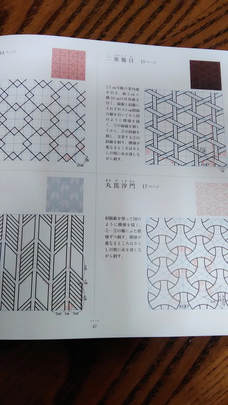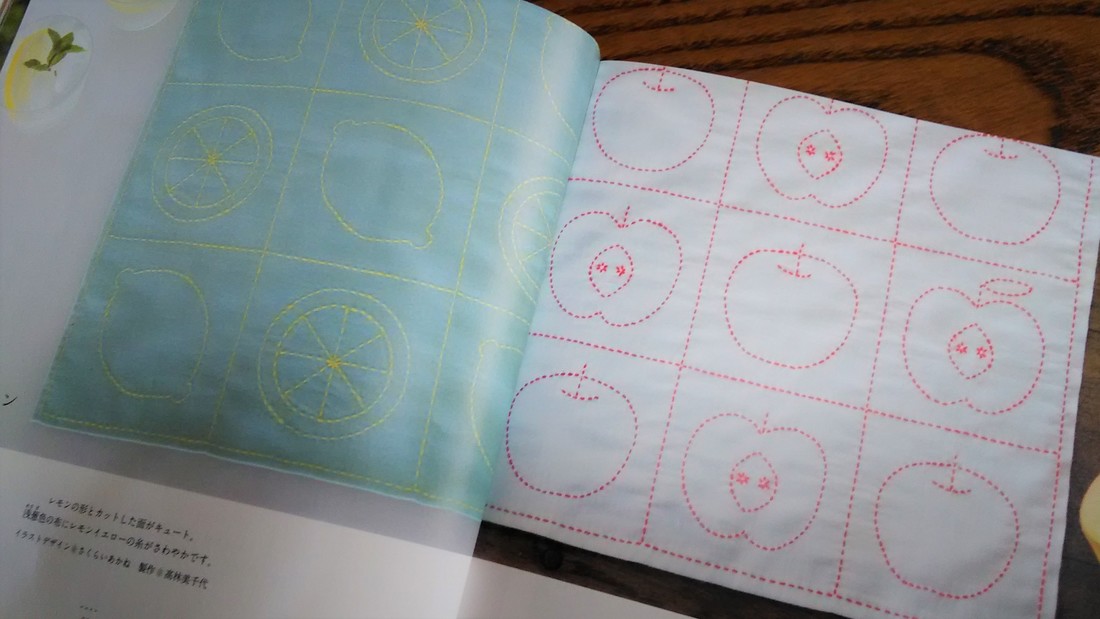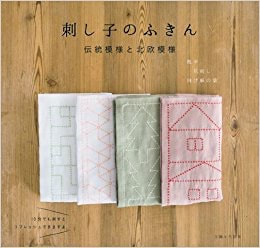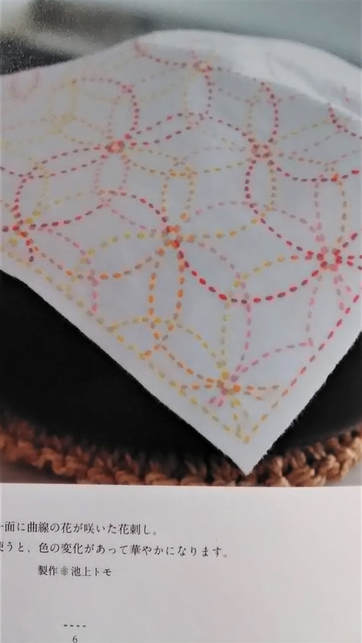|
As I mentioned in my last post, my teacher, Nakazaki Sensei, studied under Eiko Yoshida (1922-2002) who played a major part in reviving traditional sashiko and creating the sashiko boom in modern Japan. Nowadays Eiko Sensei’s students and followers are led by Kumiko Yoshida. Kumiko Sensei and her students cooperated with the publication of a book released by Shufu to Seikatsu Sha in June of this year, Sashiko no fukin: dento moyo to hokuo moyo (Sashiko Fukin: Traditional Patterns and Northern European Patterns - Amazon Japan affiliate link) Nakazaki Sensei stitched three of the fukin that appear in this book.  As is obvious from the title the book features fukin stitched on cloth squares of 33cm and 34cm. Sashiko books commonly feature fukin, and I have to admit for a long time I wondered what on earth they were. That’s a topic I’d like to explore in more detail in another post soon, but for now let’s say that fukin are basically square cloths that serve decorative and practical purposes. This book shows fifteen fukin stitched with traditional sashiko patterns and fifteen stitched with Northern European motifs. What sets my heart beating when I leaf through the pages is the glorious use of colour; sky blue and lemon yellow on white, pink on olive, grey on red, yellow on green, etcetera etcetera, plus the obligatory white on blue. Though I do love the traditional blue and white, I find the use of colour in contemporary sashiko really exciting. It allows so much potential for artistic expression, and thinking about possible colour combinations of pieces is one of the most enjoyable aspects of sashiko for me. The other thing I find striking about this book is how well these Northern European motifs adapt to sashiko, whether in freestyle form, such as the cloths featuring food and vegetable designs, or as repeated patterns like the trees or butterflies. It’s another marvellous illustration of the adaptability and infinite potential of sashiko. The contents of the book include a one-page photograph of each fukin, basic instructions for sashiko, instructions for reproducing and stitching the traditional patterns, and diagrams for reproducing the Northern European motifs. Of the traditional patterns, the hanazashi (flower) particularly caught my eye with its colourful combination of orange, yellow, pink and red threads that very aptly suggest a bright patch of flowers, and makes a nice contrast with the Northern European flower motif of three different wildflowers. Once you start thinking of ordinary everyday things around you in terms of patterns and colours, there’s no end of inspiration for sashiko!
2 Comments
10/2/2017 04:31:06 pm
I've not spent much time looking at Sashiko before. Looking at your posts, I'm reminded of Sol LeWitt's paintings in terms of how they looks and the infinite impossibilities you've discussed here.
Reply
Alison
10/2/2017 05:39:26 pm
Thank you Stuart. I'm not familiar with Sol LeWitt's paintings, but if they remind you of sashiko I'm sure I'd like them! I hope these posts inspire you.
Reply
Leave a Reply. |
Watts SashikoI love sashiko. I love its simplicity and complexity, I love looking at it, doing it, reading about it, and talking about it. Archives
September 2022
Categories
All
Sign up for the newsletter:
|




 RSS Feed
RSS Feed



